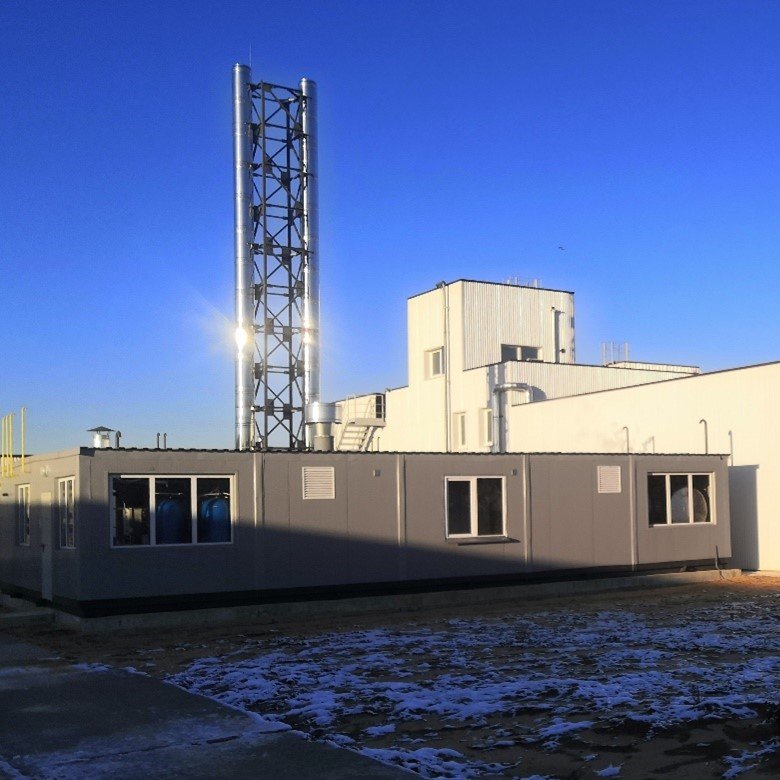Upgrading the wastewater treatment plant of a Russian brewery
Combination of anaerobic and aerobic technology
In 2018, CUSS was commissioned to design and install a wastewater treatment plant for a brewery in the west of Russia. The plant is designed for a daily wastewater volume of 2,255m³.

Numbers & Facts:
• Location: Novovoronzeh, Voronezh Oblast, Russia
• Hydraulic plant capacity: 2255 m³/d
• Organic load: 5500 mg/l (COD)
• Year of construction: 2021/2022
CONCEPTUAL FORMULATION
In order to comply with the required effluent values, CUSS designed a plant in which anaerobic and aerobic treatment of the effluent is provided. In order to reduce the TSS content in the wastewater and to remove phosphorus, the dosing of precipitants was also planned. Due to the low temperatures in winter, care had to be taken during the design phase to prevent the plant from freezing. Therefore, the plant was built entirely inside a building. Larger tanks were partially sunk into the ground, minimising the size of the building and the amount of insulation material needed. Where necessary, pipelines were insulated. Large sedimentation basins were not used and the separation of solid and liquid phases takes place directly in the SBR basins used.
As a first treatment step, a coarse and then a fine screen were installed to remove abrasive substances from the wastewater. The wastewater is then homogenised and neutralised. From the equalisation basin, the wastewater is fed into a UASB reactor with internal recirculation. The recirculation guarantees the necessary flow rate in the UASB even when the wastewater inflow fluctuates. To create the conditions required for anaerobic degradation, nutrients are also automatically added to the wastewater and the pH is controlled. The necessary wastewater temperature of 35-38°C is guaranteed by an automated heating of the wastewater by steam. The biogas produced during the anaerobic phase, which is then safely incinerated. The customer did not plan to use the biogas in the boiler.
The anaerobic treatment removes about 75-85 % of the organic load from the wastewater. To achieve the necessary clear water quality, a further aerobic step is necessary. This takes place in two SBR tanks connected in parallel. By using SBR reactors and dosing a precipitant, a separate separation of solid and liquid phase is not necessary. The clear water from the SBRs can be discharged directly via an intermediate basin.
The excess sludge produced in the system is temporarily stored in a sludge storage tank and then dewatered in a sludge press.
WASTEWATER CONSTITUENTS:
- High organic load
- High TSS content
PROCESS STEPS:
- Mechanical pre-treatment
- Mixing and equalisation basin
- Anaerobic cleaning
- Aerobic purification
- Sludge treatment

